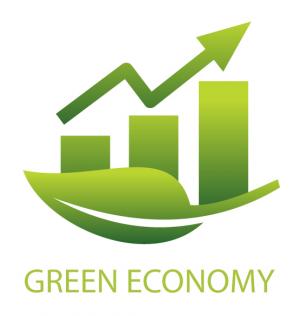Government of Cape Verde has the ambitious plan that aims to achieve the 100% penetration of renewable energies in Cape Verde by 2020.
Description
Source: Government of Cape Verde
In the years 2010 and 2011, the Cape Verde Ministry of Tourism, Industry and Energy conducted a study that included an assessment of the renewable energy potentials existing on the different islands. The results of that study were compiled in the publication Cape Verde 50% Renewable: A Roadmap to 2020, listing a number of potentials for a wide range of renewable energies and other issues related to sustainable energy supply, including wind and solar energy, energy efficiency and wastewater to name a few.
The energy needs of Cape Verde are currently covered to 25% by renewable energies, with peaks of 35%. Current studies show that if the needs were covered to 50%, the upward trend in oil prices would still result in a fuel oil bill of 13,800 billion over 20 years. The same studies show that investments between 1,000 and 1,800 million in renewable energy power production capacity could provide a 100% renewable energy system (covering the total electricity demand) associated with no further fuel costs. The economic difference is supposed to be invested in further renewable energy generation in order to produce desalinated water, creating new industrial symbioses cycles with dispatchable consumers and an extension of the energy transmition grid as well as energy storage options. Hence, the renewable energy investments are investments in new business sectors and positive future developments.
A final study is underway to detail the final implementation plan and evaluate investment costs to realize this goal. The implementation of the renewable energy strategy will be realized through Luxembourg development cooperation and the technical support of the German Institute for applied Material Flow Management in charge to develop business plans, identify suitable technologies and technology providers in order to enable Cape Verde to take the next steps towards the implementation of already identified project potentials.
The final goal is to create jointly with the Capverdean government a public private partnership to encourage foreign direct investments to meet the stated goal of 100% renewable by the year 2020 together with local investors and those from the Diaspora.
SDGS & Targets
Goal 8
Promote sustained, inclusive and sustainable economic growth, full and productive employment and decent work for all
8.1
8.1.1
Annual growth rate of real GDP per capita
8.2
Achieve higher levels of economic productivity through diversification, technological upgrading and innovation, including through a focus on high-value added and labour-intensive sectors
8.2.1
Annual growth rate of real GDP per employed person
8.3
Promote development-oriented policies that support productive activities, decent job creation, entrepreneurship, creativity and innovation, and encourage the formalization and growth of micro-, small- and medium-sized enterprises, including through access to financial services
8.3.1
Proportion of informal employment in total employment, by sector and sex
8.4
Improve progressively, through 2030, global resource efficiency in consumption and production and endeavour to decouple economic growth from environmental degradation, in accordance with the 10-Year Framework of Programmes on Sustainable Consumption and Production, with developed countries taking the lead
8.4.1
Material footprint, material footprint per capita, and material footprint per GDP
8.4.2
Domestic material consumption, domestic material consumption per capita, and domestic material consumption per GDP
8.5
8.5.1
Average hourly earnings of female and male employees, by occupation, age and persons with disabilities
8.5.2
Unemployment rate, by sex, age and persons with disabilities
8.6
8.6.1
Proportion of youth (aged 15-24 years) not in education, employment or training
8.7
Take immediate and effective measures to eradicate forced labour, end modern slavery and human trafficking and secure the prohibition and elimination of the worst forms of child labour, including recruitment and use of child soldiers, and by 2025 end child labour in all its forms
8.7.1
Proportion and number of children aged 5‑17 years engaged in child labour, by sex and age
8.8
Protect labour rights and promote safe and secure working environments for all workers, including migrant workers, in particular women migrants, and those in precarious employment
8.8.1
Fatal and non-fatal occupational injuries per 100,000 workers, by sex and migrant status
8.8.2
Level of national compliance with labour rights (freedom of association and collective bargaining) based on International Labour Organization (ILO) textual sources and national legislation, by sex and migrant status
8.9
By 2030, devise and implement policies to promote sustainable tourism that creates jobs and promotes local culture and products
8.9.1
Tourism direct GDP as a proportion of total GDP and in growth rate
8.10
Strengthen the capacity of domestic financial institutions to encourage and expand access to banking, insurance and financial services for all
8.10.1
(a) Number of commercial bank branches per 100,000 adults and (b) number of automated teller machines (ATMs) per 100,000 adults
8.10.2
Proportion of adults (15 years and older) with an account at a bank or other financial institution or with a mobile-money-service provider
8.a
8.a.1
Aid for Trade commitments and disbursements
8.b
By 2020, develop and operationalize a global strategy for youth employment and implement the Global Jobs Pact of the International Labour Organization
8.b.1
Existence of a developed and operationalized national strategy for youth employment, as a distinct strategy or as part of a national employment strategy
SDG 14 targets covered
Deliverables & Timeline
Resources mobilized
Partnership Progress
Feedback
Action Network


